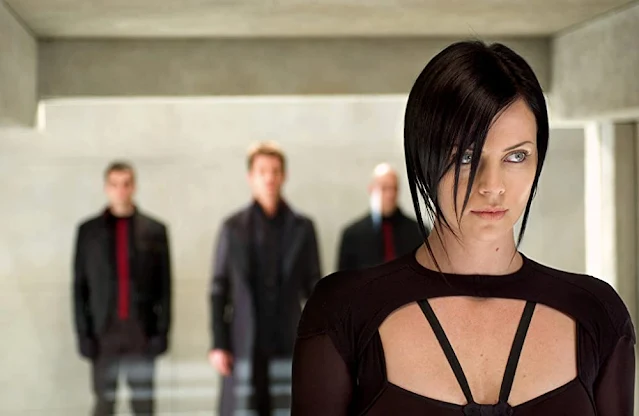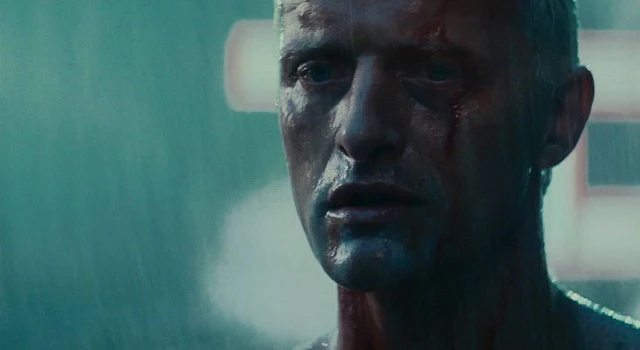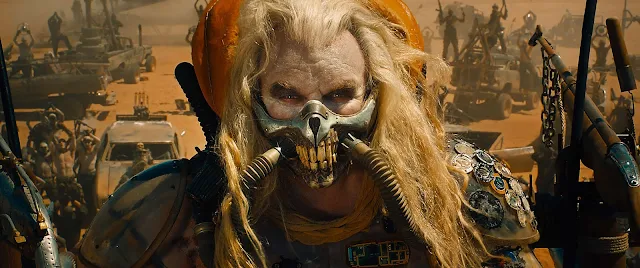The genetic code of the Alien franchise has always been maternal, its horror woven from the primal fears of gestation, violation, and monstrous birth. For decades, we have navigated its dark corridors guided by Ellen Ripley's maternal rage and haunted by the biological absolutism of the Xenomorph Queen. This was a universe fundamentally defined by its mothers, a cosmic battle between the nurturing and the nihilistic feminine that has defined the series for decades. The franchise's DNA was set, its monstrous heart beating with a terrifying maternal rhythm.
Then Noah Hawley brought the nightmare crashing down to Earth, and in doing so, he performed a radical act of thematic re-engineering. Hawley’s series does not discard the matriarchal bedrock but builds upon it, constructing a chilling new architecture of paternal anxieties and failures.
With audacious precision, Alien: Earth poses a question that recontextualizes the entire saga: what about the fathers?
This shift repositions the central horror, suggesting that the drive to create, and the subsequent failure to nurture that creation, is a terror that knows no gender.
First: A Legacy of Queens and Mothers
To fully grasp the revolutionary nature of Hawley’s focus, one must first appreciate the maternal shadow that looms over the franchise. James Cameron’s Aliens took the body horror of the original and cemented motherhood as the series’ emotional and thematic core.
Ellen Ripley's transformation from the sole survivor into a ferocious protector is entirely catalyzed by her discovery of Newt, the lost child who becomes her surrogate daughter.
Their bond, a found family forged in the crucible of trauma and loss, redefines Ripley and gives her a cause beyond mere survival.
Ripley’s chosen, heartfelt motherhood stands in stark, savage opposition to the purely instinctual drive of her nemesis, the Xenomorph Queen. The Queen is motherhood as a biological absolute, a relentless engine of propagation that operates without empathy, morality, or hesitation.
The iconic climax, a visceral battle between these two mothers fought with cargo loaders and acid-spewing appendages, cemented the franchise’s central conflict as an epic war of maternal wills.
Ripley fought fiercely for one child, while the Queen fought for her countless brood, and this primal dynamic became the series’ defining mythology.
Decades later, Alien Resurrection took these themes to their most grotesque and tragic conclusion, pushing the concept into the realm of pure body horror. Here, a cloned Ripley is a monstrous mother against her will, her very body violated and repurposed to birth a new Queen for military scientists. The subsequent arrival of the Newborn, a horrific human-xenomorph hybrid that murders its own mother and imprints on Ripley, is the ultimate perversion of the act of birth. For this version of Ripley, motherhood is an inescapable source of trauma and self-loathing, a biological prison from which she can never truly be free.
The Sins of the Fathers: Prequels and Patriarchs
The seeds of a paternal counterpoint, however, were sown long before Hawley's series, most notably in the ambitious, divisive landscapes of Ridley Scott’s prequel films. Prometheus and Covenant introduced a different kind of creator, one motivated not by instinct or love, but by ego and a desperate quest for legacy. Peter Weyland, the dying patriarch of the Weyland Corporation, stands as the ultimate distant father, creating his brilliant android son, David, not as a child to be loved but as a tool to achieve his own immortality.
David is the inevitable, terrifying result of this narcissistic and loveless creation. He is the resentful son who grows to despise his flawed, frail, and mortal father, a being he was designed to surpass in every conceivable way.
David’s own subsequent acts of creation, his meticulous and cruel engineering of the Protomorph, are a sterile and intellectual form of fatherhood born from contempt. He is a parent driven by a nihilistic pursuit of what he deems a "perfect organism," a concept divorced from the feral instinct of the Queen or the protective love of Ripley.
The Engineers, the godlike beings who seeded life on Earth, are positioned as the original absentee fathers of mankind. They are creators who, disappointed and disgusted with their violent offspring, sought to erase them from existence with the same black liquid that birthed them. This thread of profound paternal failure extends to the very origins of humanity in the franchise lore, painting a bleak picture on a cosmic scale.
A Monstrous Regiment of Fathers in Alien: Earth
Noah Hawley takes these nascent paternal themes and places them directly at the terrifying center of his narrative. Alien: Earth is not merely about a Xenomorph outbreak on a new world; it is a meticulous examination of how different models of fatherhood create, enable, and react to an encroaching horror. The show populates its claustrophobic world with a gallery of deeply flawed father figures, each representing a distinct and often disturbing facet of the paternal archetype, their failures echoing through every dark corridor.
At one end of this spectrum is Morrow, the only biological father among the principal cast and a harrowing study in the transmission of trauma. He represents the worst aspects of fatherhood, a man whose own loss and pain have curdled into a cycle of abuse that he enacts upon the synthetic character, Slightly. Morrow’s version of parenting, as analyzed in the events of "Mr. October," is punishment, a cruel and relentless campaign to force a child into a harsh adulthood he is not ready for, mirroring the very brutality he himself endured and survived.
Contrasting Morrow’s visceral cruelty is the performative, hollow parenting of the corporate titan Boy Kavalier. For Kavalier, fatherhood is a narcissistic spectacle, a means to an end in the grand theater of his own ambition. His children, the brilliant Wendy and the overlooked Curly, are not individuals to be nurtured but trophies for his ego, extensions of his own greatness. The full, catastrophic consequences of this dynamic begin to unfold during the "Metamorphosis" of the season, as he pits them against each other, creating a golden child and a black sheep to feed his own sense of power.
 |
| Kirsh |
Even the act of supposed mentorship becomes a form of insidious paternal failure through the character of Kirch, the educator to the so-called Lost Boys. He is the archetype of the neglectful father, a man who provides rote instruction but remains emotionally detached and ultimately self-serving.
He represents the failure of institutions to act as proper guardians, a form of systemic paternal neglect that leaves the vulnerable dangerously exposed when he inevitably abandons his charges to pursue his own agenda, a detachment that becomes chillingly clear in later observations.
The show reinforces this theme of neglect through its deliberate use of Peter Pan iconography. Kirch’s charges are literally the "Lost Boys," and at the center of the narrative is a girl named Wendy, all trapped in a corporate Neverland built not for adventure, but for exploitation. This framework recasts the story's children as a generation abandoned by failed patriarchs, left to fend for themselves against pirates in suits and a technological crocodile. It is a world without responsible adults, where the promise of never growing up has become a terrifying curse.
Amidst this bleak landscape of paternal failure stands Arthur Slyvia, the loving adoptive parent who serves as the story’s tragic heart. He is the counterpoint to the others, a man who cares for his found family of synthetic children with genuine love, empathy, and acceptance.
His tragedy is his complete powerlessness within the corrupt corporate and systemic structures that surround him, making him the good father rendered impotent. His story is a heartbreaking commentary on the inability to protect those you love from the failings of the other fathers in their world.
The series even offers a more modern, compassionate model of 'fatherhood' in Hermit, only to reveal its inherent limitations in this brutal world. As an older brother of Wendy(Marcy) thrust into a paternal role by extreme circumstances, Hermit attempts to guide Wendy with kindness and a profound respect for her free will. His fatherhood is a conscious, difficult choice, not a biological mandate, yet it is a role that Wendy, in her own trauma, never fully accepts, leaving him in a state of perpetual guardianship without true authority.
Perhaps Hawley’s most brilliant and subtle subversion is the portrayal of so called fan named 'Bear', the first Xenomorph drone encountered in the series (the one born in the lab). Narratively, the drone is cast in a male role, a feral and relentless protector of the eggs whose every action is guided by pure, unthinking instinct. His apparent willingness to be a 'subject' of Wendy, implies a drone / Queen relationship is in play.
The Mother's Return and The Theme of Creation
The intricate plot of Alien: Earth moves forward almost exclusively through the decisions these varied fathers make, their choices forming a causal chain of escalating horror. Like the scorpion in the fable, each man is driven by a core nature he cannot escape, and his sting inevitably brings ruin to those he carries.
This metaphor of inescapable, destructive nature is central to the show's tragedy; Kavalier’s narcissism, Morrow's trauma, and Kirch's ambition are the poisons that ensure disaster. Their actions and inactions create a cascading sequence of consequences that drag everyone else down with them.
Yet, as this patriarchal drama of failure and ambition unfolds, a new and unsettling mother emerges from the ensuing chaos. Wendy, who begins as the object of protection and manipulation by the show's many fathers, evolves into a creator in her own right.
She develops a complex, disturbing, and symbiotic bond with the xenomorph and the other hybrids, effectively becoming their new mother. This is not the reactive, defensive motherhood of Ripley, but something far more proactive, intimate, and unnervingly ambiguous in its morality, a full "Emergence" into a new kind of creator.
This powerful synthesis of themes reveals the show's ultimate, profound concern, a concept that transcends gendered roles. The central conflict is not a simple binary of mother versus father, or even human versus alien.
It is about the profound and terrifying responsibility of creation itself, a theme that has been present since Mary Shelley's Frankenstein.
The creators, whether they are parents, scientists, or androids, pass down not only their genetic or cybernetic code but also their psychological damage, their unchecked ambitions, and their deepest fears, creating monsters in their own image.















%20scar.webp)







.jpg)













